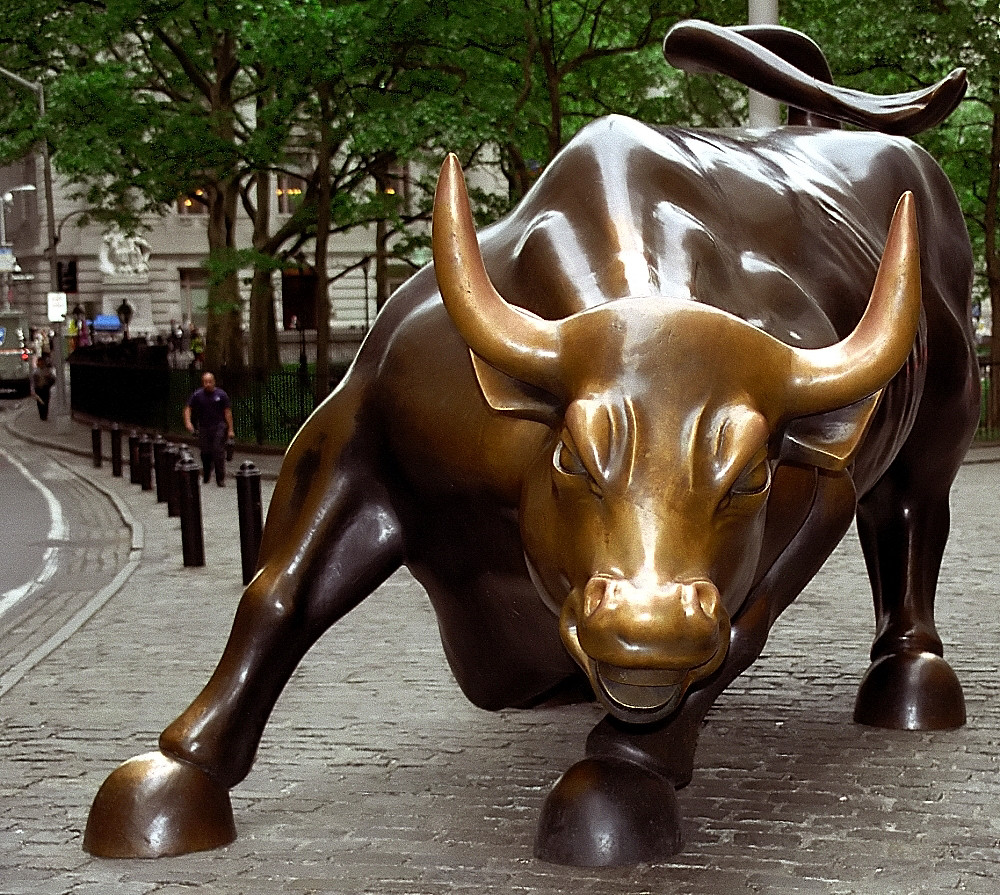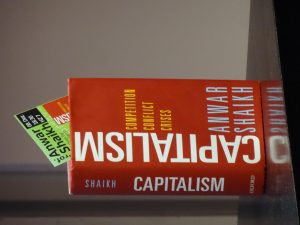An Economic Paradox
✑ PRABHAT PATNAIK` ╱ ± 8 minutes

Despite low agricultural growth, India has become a regular and large-scale exporter of foodgrains. This is a paradox. It is only possible if there is an absolute worsening of the condition of a significant segment of the population.

Real income in the hands of the agricultural producers (peasants and agricultural labourers) has been squeezed.
Despite low agricultural growth, India has become a regular and large-scale exporter of foodgrains. This is a paradox. It is only possible if there is an absolute worsening of the condition of a significant segment of the population.
From: The People's Democracy May 12, 2019 ╱ About the author
Prabhat Patnaik is Professor Emeritus at the Centre for Economic Studies and Planning, Jawaharlal Nehru University, New Delhi. His books include Accumulation and Stability Under Capitalism (1997), The Value of Money (2009), and Re-envisioning Socialism (2011). Find his blog posts at IDEAs here.
Statistics show that the period of neo-liberal economic policy in India has witnessed a much higher rate of GDP growth compared to the earlier dirigiste period, indeed almost double the previous rate. They also show that the rate of agricultural growth, especially of foodgrains, in the neo-liberal period has been distinctly lower than in the previous period.
In per capita terms the contrast is even sharper. The per capita GDP growth under neo-liberalism is more than double what it was earlier, while the per capita foodgrain output growth in the neo-liberal era has been almost zero, while in the earlier period it was anywhere between 0.5 and 1 percent per annum (depending on the time-segment we take).
This growing imbalance between the foodgrain and non-foodgrain sectors should have meant a growing excess demand for foodgrains in the neo-liberal era compared to earlier, leading either to faster food price inflation or to larger food imports. What we find however is exactly the opposite. Far from there being larger foodgrain imports, India has become a regular and large-scale exporter of foodgrains; and while the earlier period was characterized by a more or less persistent and significant food price inflation, the neo-liberal period has seen on average lower inflation rates for foodgrains. And barring just a handful of occasions during this entire neo-liberal period of over a quarter century, foodgrain stocks with the government have always been ample, above what are considered “normal” levels.
How is this possible? How can a growing imbalance between the foodgrain and non-foodgrain sectors, with the former witnessing a decline in per capita growth and the latter an increase, instead of causing a situation of acute excess demand, actually cause a state of excess supply, which is its diametrical opposite? Putting the matter differently, since what economists call the “income elasticity of demand” for foodgrains, i.e. the percentage change in the per capita demand for foodgrains when there is a 1 percent increase in per capita real income, is normally positive, we should have had a huge foodgrain shortage in the neo-liberal period; then how is it that we seem to have ample foodgrains, instead, to export and to hold as stocks? This is a paradox.
To explain this paradox by saying that there has been an increase in income inequality is not enough. True, the income elasticity of demand depends on income distribution, and when this distribution becomes more unequal, the income elasticity of demand for foodgrains falls, since at the margin a rupee transferred from the poor to the rich lowers the demand for foodgrains, even though on average the rich consume, directly and indirectly, more foodgrains per capita than the poor. But pointing to a worsening of income distribution simply would not do as an explanation, because we are not talking about a mere lowering of the income elasticity of demand for foodgrains; we are talking about its being negative. And this is possible only if there is an absolute worsening of the condition of a significant segment of the population.
But saying even this is not enough. How did this lowering of purchasing power relative to the food price (which itself has not increased any faster) come about? One obvious answer would be the deceleration in agricultural, including foodgrain, output growth itself. When this output is less, then there is less purchasing power in the hands of the peasants and agricultural workers. Hence, if there is less production, there will be less demand from the producers. But this alone is not an adequate explanation.
If there is a reduction in foodgrain output by one unit, then certainly the demand for foodrains by the producers, i.e. peasants and labourers, goes down, both directly (as they consume less foodgrains), and also indirectly through their reduced demand for other commodities, whose producers in turn are therefore forced to demand less foodgrains.
But a one unit fall in foodgrain output cannot realistically, i.e. in any actually functioning economy, reduce foodgrain demand in this manner by more than one unit; for if this was the case then the converse too would be true, and a one unit increase in foodgrain output would lead to a more than one unit increase in the demand for foodgrains, causing uncontrollable inflation in the economy. It follows therefore that a reduction in foodgrain output must cause excess demand (since on its own it will cause a less than one unit fall in demand). If output falls from 100 to 99, i.e. by one unit, then demand must fall by less than one unit, to say 99.5, in which case there would be excess demand of 0.5.
Hence merely pointing to the fall in per capita foodgrain growth rate as an explanation of excess supply of foodgrains during the neo-liberal period, will not do. Something else is clearly involved. And to see what this is we need to draw a distinction. The real purchasing power in the hands of the agriculture-dependent population (and we are concentrating upon this population in the present context) depends on two factors: the output it produces, and the real purchasing power per unit of the output it produces.
These two are clearly two different things. Even if the same physical output is produced, the real purchasing power, or the real income, in the hands of the producers can differ, depending upon the input prices they have to pay, the output prices they obtain, and the prices they have to pay for the bundle of goods they purchase.
What we have had in India during the neo-liberal period is that the real income in the hands of the agricultural producers (peasants and agricultural labourers) has been squeezed both because of the decline in the agricultural (especially foodgrain) output growth, and because the real income per unit of output has also declined, because of the (relative) rise in input prices, the (relative) fall in output prices (as manifested for instance in the restraint on procurement prices), and in the rise in the price of the bundle of goods that they purchase (especially essential services like education and healthcare).
We saw above that if real purchasing power per unit of output produced remains unchanged then a reduction in foodgrain output (or in its growth rate) alone cannot explain the paradoxical emergence of a situation of excess supply of foodgrains. But if the reduction in foodgrains growth rate is accompanied by a reduction in real purchasing power per unit of output for the producers, then there may well emerge a situation of excess supply of foodgrains which the faster growth of the non-foodgrain sector (which directly and indirectly generates less demand for foodgrains per unit of its output) may not negate.
And to the extent that technological progress in this latter sector occurs over time which raises its rate of growth of labour productivity and hence lowers the employment, and by implication the food demand, per unit of its output, the excess supply in the foodgrains market will become more and more pronounced.
When one looks at the matter closely however it is clear that even the lowering of the per capita growth rate of foodgrains is a result of the reduction in the real purchasing power of their producers per unit of output. This has occurred through an increase in input prices, a restraint on procurement prices and the rise in their cost of living, all of which have made even “simple reproduction” difficult for large sections of them.
In per capita terms the contrast is even sharper. The per capita GDP growth under neo-liberalism is more than double what it was earlier, while the per capita foodgrain output growth in the neo-liberal era has been almost zero, while in the earlier period it was anywhere between 0.5 and 1 percent per annum (depending on the time-segment we take).
This growing imbalance between the foodgrain and non-foodgrain sectors should have meant a growing excess demand for foodgrains in the neo-liberal era compared to earlier, leading either to faster food price inflation or to larger food imports. What we find however is exactly the opposite. Far from there being larger foodgrain imports, India has become a regular and large-scale exporter of foodgrains; and while the earlier period was characterized by a more or less persistent and significant food price inflation, the neo-liberal period has seen on average lower inflation rates for foodgrains. And barring just a handful of occasions during this entire neo-liberal period of over a quarter century, foodgrain stocks with the government have always been ample, above what are considered “normal” levels.
How is this possible? How can a growing imbalance between the foodgrain and non-foodgrain sectors, with the former witnessing a decline in per capita growth and the latter an increase, instead of causing a situation of acute excess demand, actually cause a state of excess supply, which is its diametrical opposite? Putting the matter differently, since what economists call the “income elasticity of demand” for foodgrains, i.e. the percentage change in the per capita demand for foodgrains when there is a 1 percent increase in per capita real income, is normally positive, we should have had a huge foodgrain shortage in the neo-liberal period; then how is it that we seem to have ample foodgrains, instead, to export and to hold as stocks? This is a paradox.
To explain this paradox by saying that there has been an increase in income inequality is not enough. True, the income elasticity of demand depends on income distribution, and when this distribution becomes more unequal, the income elasticity of demand for foodgrains falls, since at the margin a rupee transferred from the poor to the rich lowers the demand for foodgrains, even though on average the rich consume, directly and indirectly, more foodgrains per capita than the poor. But pointing to a worsening of income distribution simply would not do as an explanation, because we are not talking about a mere lowering of the income elasticity of demand for foodgrains; we are talking about its being negative. And this is possible only if there is an absolute worsening of the condition of a significant segment of the population.
Pointing to a worsening of income distribution simply would not do as an explanation.While this must have happened, for there is no other explanation of this paradox, simply pointing to it is also not enough. We have to ask: how did it happen? For instance there can be an absolute worsening in the condition of a significant segment of the population, if there is a rise in prices relative to their base money incomes, i.e. through what the English economist John Maynard Keynes had called a “profit inflation”. But we have seen that the neo-liberal period has seen no particular acceleration in food price inflation. So obviously it was not through a rise in food price relative to the purchasing power of the working people, but through a lowering of this purchasing power relative to the food price (which itself has not increased any faster) that this absolute worsening in their condition has come about.
But saying even this is not enough. How did this lowering of purchasing power relative to the food price (which itself has not increased any faster) come about? One obvious answer would be the deceleration in agricultural, including foodgrain, output growth itself. When this output is less, then there is less purchasing power in the hands of the peasants and agricultural workers. Hence, if there is less production, there will be less demand from the producers. But this alone is not an adequate explanation.
If there is a reduction in foodgrain output by one unit, then certainly the demand for foodrains by the producers, i.e. peasants and labourers, goes down, both directly (as they consume less foodgrains), and also indirectly through their reduced demand for other commodities, whose producers in turn are therefore forced to demand less foodgrains.
But a one unit fall in foodgrain output cannot realistically, i.e. in any actually functioning economy, reduce foodgrain demand in this manner by more than one unit; for if this was the case then the converse too would be true, and a one unit increase in foodgrain output would lead to a more than one unit increase in the demand for foodgrains, causing uncontrollable inflation in the economy. It follows therefore that a reduction in foodgrain output must cause excess demand (since on its own it will cause a less than one unit fall in demand). If output falls from 100 to 99, i.e. by one unit, then demand must fall by less than one unit, to say 99.5, in which case there would be excess demand of 0.5.
Hence merely pointing to the fall in per capita foodgrain growth rate as an explanation of excess supply of foodgrains during the neo-liberal period, will not do. Something else is clearly involved. And to see what this is we need to draw a distinction. The real purchasing power in the hands of the agriculture-dependent population (and we are concentrating upon this population in the present context) depends on two factors: the output it produces, and the real purchasing power per unit of the output it produces.
These two are clearly two different things. Even if the same physical output is produced, the real purchasing power, or the real income, in the hands of the producers can differ, depending upon the input prices they have to pay, the output prices they obtain, and the prices they have to pay for the bundle of goods they purchase.
What we have had in India during the neo-liberal period is that the real income in the hands of the agricultural producers (peasants and agricultural labourers) has been squeezed both because of the decline in the agricultural (especially foodgrain) output growth, and because the real income per unit of output has also declined, because of the (relative) rise in input prices, the (relative) fall in output prices (as manifested for instance in the restraint on procurement prices), and in the rise in the price of the bundle of goods that they purchase (especially essential services like education and healthcare).
What we have had in India during the neo-liberal period is that the real income in the hands of the agricultural producers (peasants and agricultural labourers) has been squeezed...This rise in the cost of living of the peasants and agricultural labourers gets obscured if we look only at the so-called terms of trade between agriculture and manufacturing: such terms of trade movements do not capture the changes in the effective prices of essential services like education and healthcare, sectors whose privatization has sent their prices skyrocketing.
We saw above that if real purchasing power per unit of output produced remains unchanged then a reduction in foodgrain output (or in its growth rate) alone cannot explain the paradoxical emergence of a situation of excess supply of foodgrains. But if the reduction in foodgrains growth rate is accompanied by a reduction in real purchasing power per unit of output for the producers, then there may well emerge a situation of excess supply of foodgrains which the faster growth of the non-foodgrain sector (which directly and indirectly generates less demand for foodgrains per unit of its output) may not negate.
And to the extent that technological progress in this latter sector occurs over time which raises its rate of growth of labour productivity and hence lowers the employment, and by implication the food demand, per unit of its output, the excess supply in the foodgrains market will become more and more pronounced.
When one looks at the matter closely however it is clear that even the lowering of the per capita growth rate of foodgrains is a result of the reduction in the real purchasing power of their producers per unit of output. This has occurred through an increase in input prices, a restraint on procurement prices and the rise in their cost of living, all of which have made even “simple reproduction” difficult for large sections of them.
It follows therefore that the squeeze on peasant agriculture affects both the supply side (through a reduction in per capita growth rate of its output) and the demand side (through both this reduction in output growth rate, and also through the reduction in real purchasing power per unit of output that caused it in the first place); the demand side effect is stronger than the supply side effect, which is why we find a situation of excess supply of foodgrains even when the GDP growth rate in the neo-liberal period is higher than before and the foodgrain growth rate is lower. Excess supply in other words arises because of the class orientation of the policies under neo-liberal capitalism.
| Top image: Rice packing center, in Sangrur, SE Punjab, India. From: Neil Palmer (CIAT). / flickr |
|---|























Comments
Post a Comment
Your thoughts...